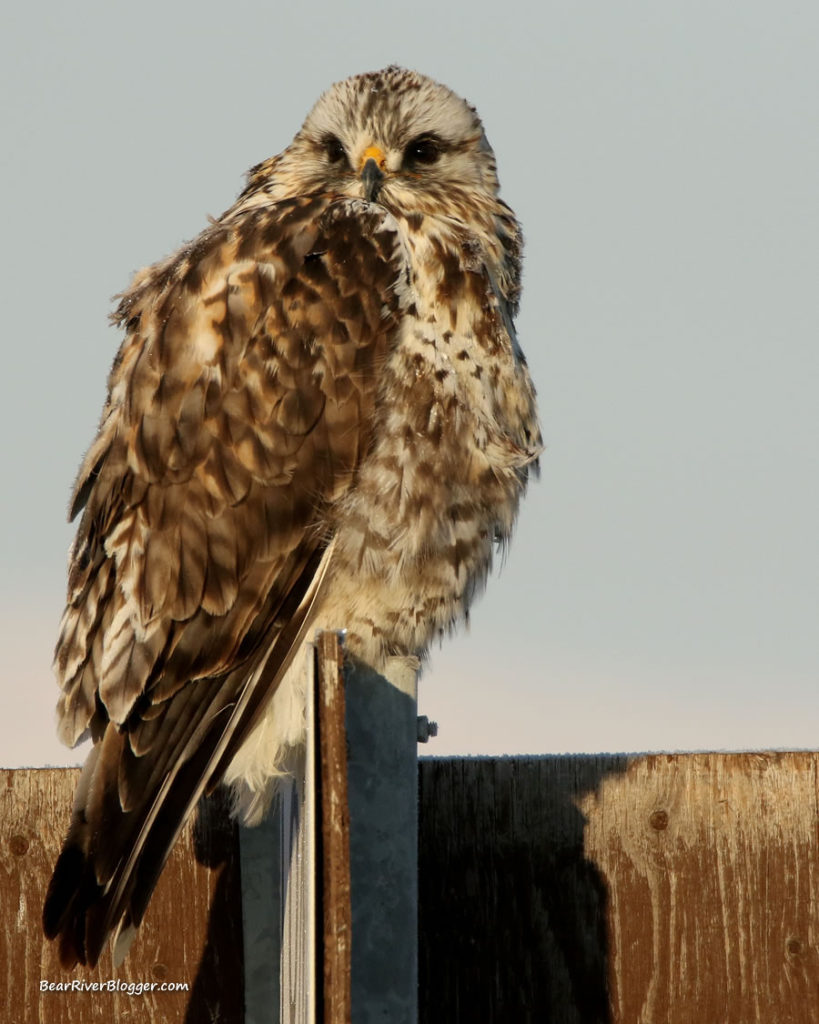Confession time here, I am a full-blown nature geek, through and through.
Yes, I really do love bird watching as you might conclude from this blog, but truthfully, between you and me, I will also admit I love butterflies just as much.
In fact, just about anything and everything in nature gets my juices flowing to some degree, even snakes as long as you keep them at arm’s length and they don’t rattle.
I get just as excited for my first dragonfly sighting of the summer as I do the first time I see a flock of snow geese circle and land in a spent corn field in late February.
Nature as a whole is just so darn fascinating to me and every creature in it has a place and a purpose, even if they do slither in the tall grass and rattle their tails.
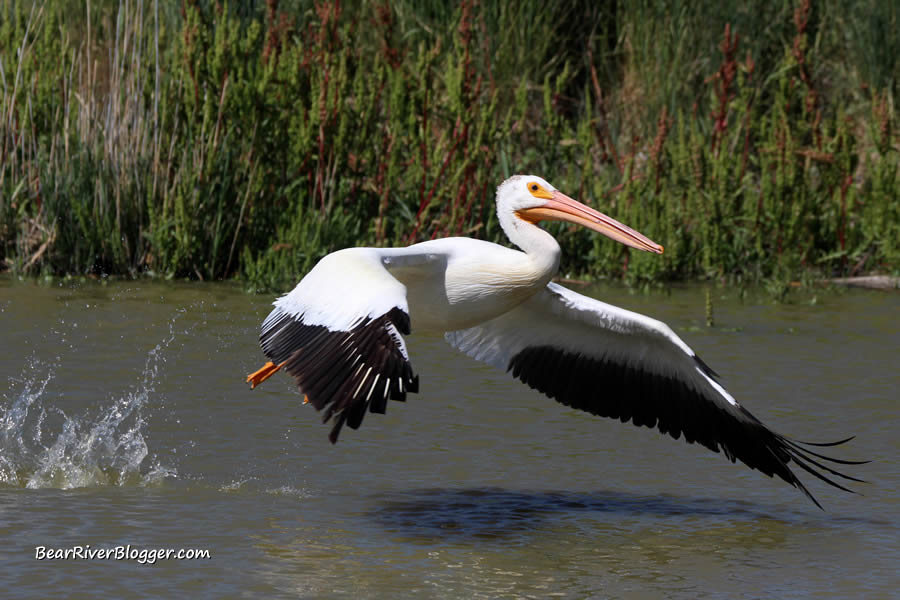
It’s why the Bear River Migratory Bird Refuge auto tour route still compels me to keep visiting, even after several decades and an unknown number of trips where one could rightfully conclude I must have “seen it all” by now.
Well, after decades of countless trips around the auto loop I could very well say yes I have seen it all, but I would be wrong, dead wrong, in fact.
This is especially true when you consider the refuge has a lot more to enjoy and learn about than just birds and bird watching.
It wasn’t until I really immersed myself into nature photography many years ago that I started to appreciate all of nature’s offerings, both flora and fauna, and realized nature as a whole has so much to offer from top to bottom that I shouldn’t limit myself to just birds.
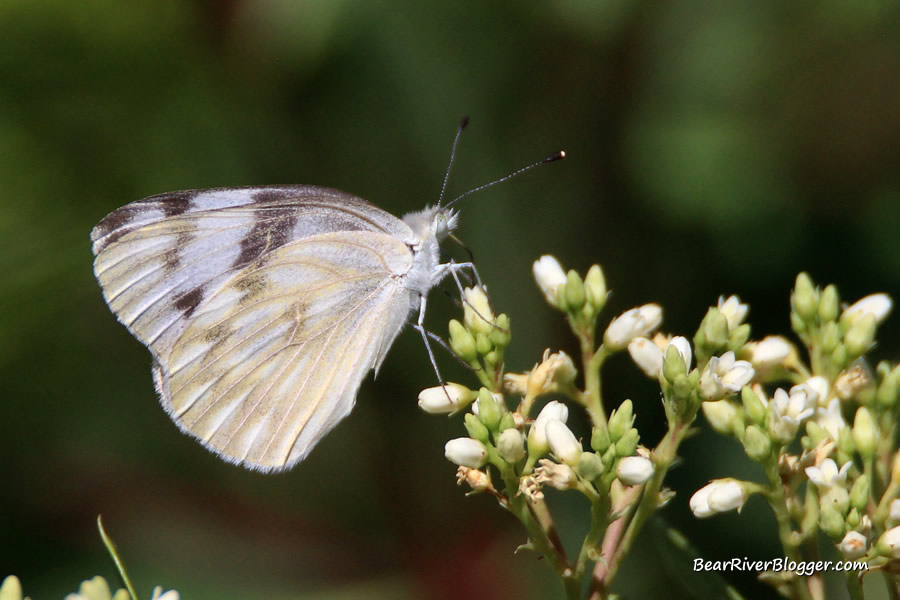
And by opening up my mind to more of the natural world around me, I found one of the more fascinating creatures the refuge auto loop has to offer the inquisitive and observant visitor such as myself is indeed the beloved but struggling monarch butterfly.
Who would have thought the Bear River Migratory Bird Refuge, a world-renowned birding hotspot that oftentimes attracts thousands of pelicans during the summer, one of my favorite birds, by the way, is also home to the iconic but troubled monarch butterfly.
I mean, seriously, in all my years of coming to the Bear River Bird Refuge to photograph pelicans and other birds, I never, ever heard anyone, refuge staff included, speak about anything on the refuge but birds and especially not the butterflies.
So, years ago when I spotted my first monarch butterfly on the auto tour route, you can imagine both my elation as well as confusion when I wondered what a monarch butterfly was doing out in a wetland.
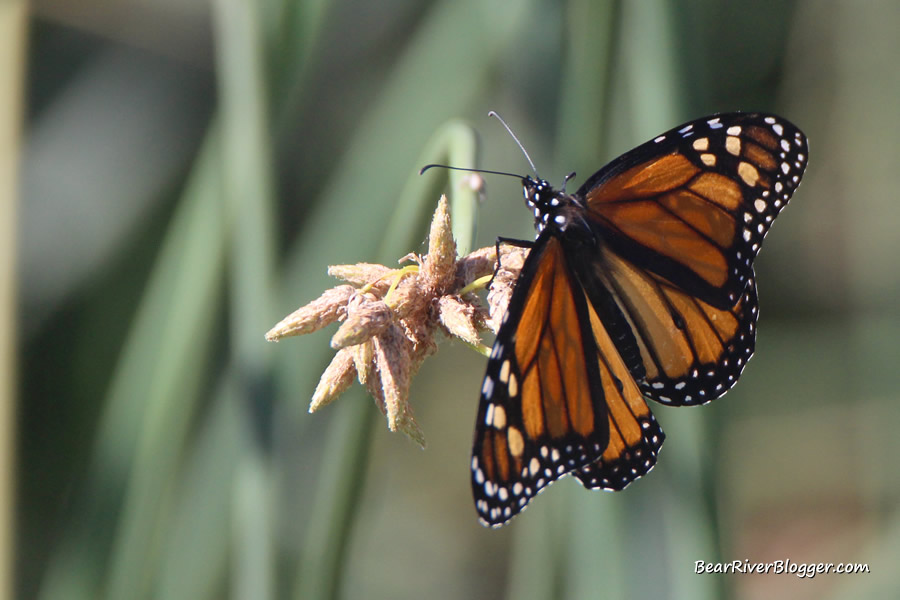
But over time I began to pay attention and learned the refuge auto tour route actually does have some great butterfly habitat, not just for monarch butterflies but for a host of other butterfly species as well.
Yesterday, I had the uncontrollable urge to photograph the American white pelican so, naturally, I packed up my camera gear and headed to the one spot I can almost always count on finding and photographing these aerial masters of the sky, the Bear River Migratory Bird Refuge auto tour loop.
It has been a lifelong passion of mine to photograph American white pelicans as they are taking off from the water.
I don’t know why I am so intrigued by this particular scene, I just am and I try and photograph it each and every chance I get
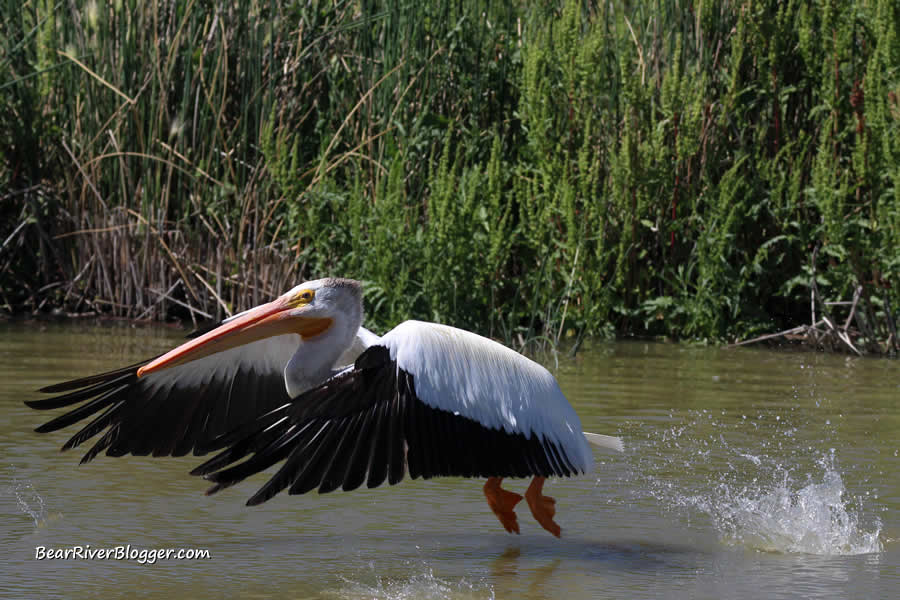
And what a day it was, very few other visitors driving the gravel loop and a pelican around every corner, or, at least, so it seemed.
Now in all fairness, a seemingly endless supply of cooperating pelicans wasn’t what made my day.
A different winged creature that casually drifted by, giving me a brief but much-welcomed interaction, actually put a bigger smile on my face.
Low and behold, it was a female monarch butterfly dancing around a small patch of bloomed showy milkweed, most likely looking for a suitable place to deposit some of her precious eggs.
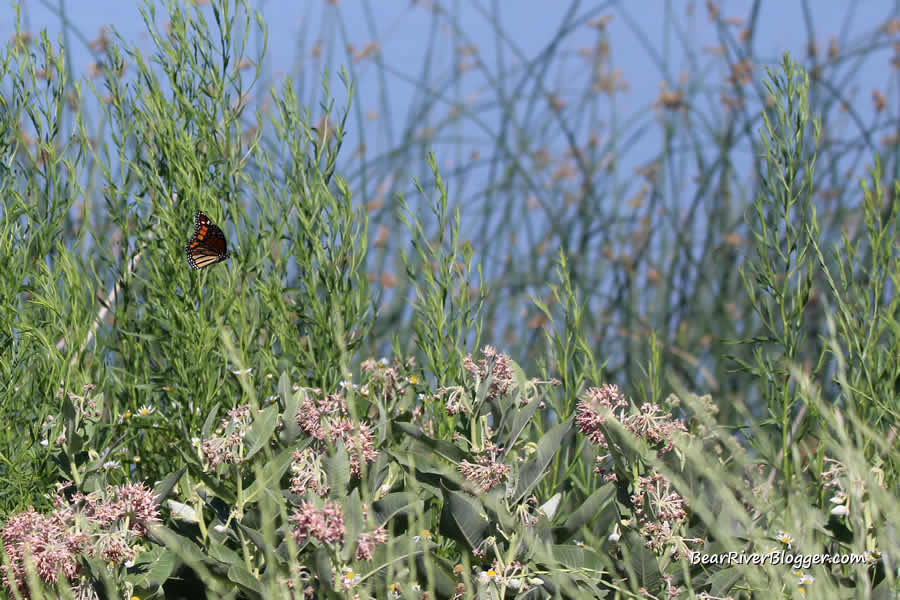
Up until that point I had only seen one other monarch butterfly all summer, also on the Bear River Migratory Bird Refuge auto tour loop a couple weeks ago.
The monarch butterfly population, especially out here in the western United States, has been in steep decline in recent years, and I was starting to wonder if I was going to see another monarch this summer as I usually have them in my yard by now.
But by day’s end, I actually came across a total of four monarch butterflies in about 20 minutes on the south end of the Bear River Bird Refuge auto loop, all fluttering around stands of bloomed showy milkweed that currently lines portions of the refuge auto loop.
The Bear River Migratory Bird Refuge, obviously well known for its vital bird habitat, is also a great place for monarch butterflies as the roadways and other areas offer numerous stands of showy milkweed for egg-laying during the summer and bloomed sunflowers for nectar during fall migration.
This year, unfortunately, some of the areas I typically find milkweed, sunflowers, and monarch butterflies are, well, gone or at least somewhat diminished due to past road work on the auto loop itself, roadside mowing, or the ongoing drought.
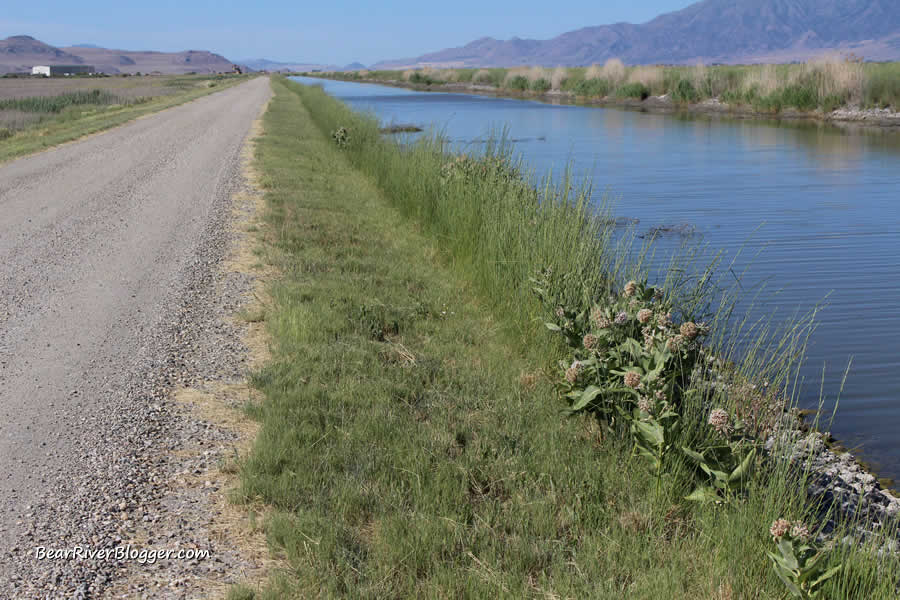
There are still plenty of stands of milkweed, however, on some portions of the auto route, particularly on the southern leg of the loop as well as just outside the main gate along the river’s edge where Forest Street ends.
One thing to keep in mind, however, being a federal wildlife refuge, you can’t disturb or take any plants or animals from the refuge unless you have a permit from the Bear River Migratory Bird Refuge so enjoy the monarchs but leave them, the caterpillars, and eggs be.
Photograph them, report them to the refuge office, and blog about them, but please leave the monarch caterpillars and eggs where you found them.
They are part of nature and should be left in nature for all to view and enjoy.
If you are interested in getting a hands-on experience with the monarch butterfly, join the Facebook group Utah Friends of Monarchs where in years past they visited Fish Springs National Wildlife Refuge to help capture, tag, and release migrating monarch butterflies to help solve their migration mystery, all with the proper permit, of course.
Hopefully, now that this covid thing is seemingly behind us, they would consider doing the event again this year as Fish Springs National Wildlife Refuge is not only another great bird-watching destination but a place to find monarch butterflies during early September as well.

I went a couple years ago and, quite frankly, always love visiting Fish Springs National Wildlife refuge as well as finding the wild mustangs that are commonly found on the Pony Express Trail on the way down to the remote refuge.
Well, I hope I have painted a little bit different picture of the Bear River Migratory Bird Refuge auto tour route now, one that has so much more to offer its visitors than just birds if you keep an eye out for all of the creatures that live on the refuge, especially the monarch butterfly.
If you love nature as much as I do, birds, butterflies, bees, dragonflies, and all the rest of nature’s creatures, head on over to our subscribe page and sign up for email notifications for future blog posts like this one where I try to show through my photography just how beautiful nature really is.
Bird Watching Apparel
Show your love and support for our website by visiting our online store if you’re in the market for a nature-related gift for someone or just something for yourself.
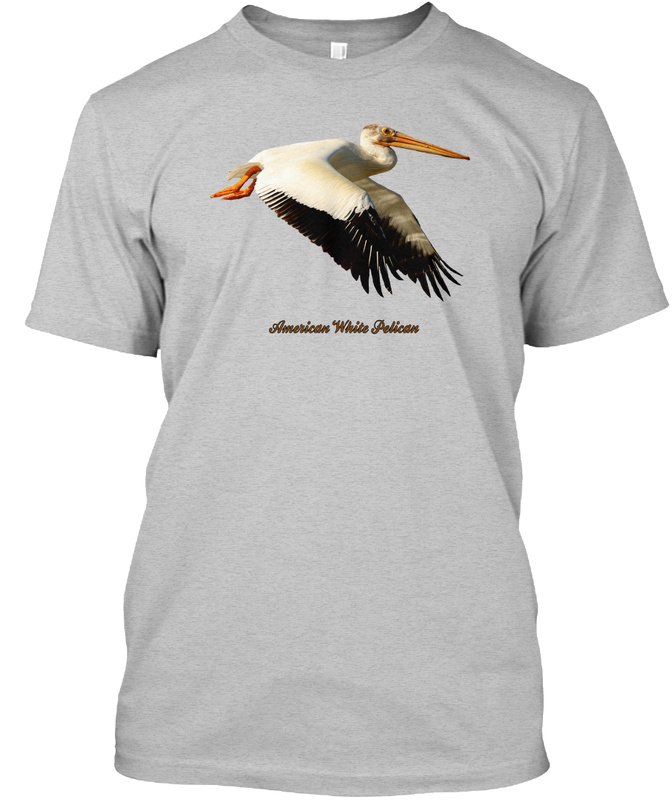
Use coupon code save20 for 20% off everything in our online store Bird Shirts and More and check back often as we are constantly adding and changing our offerings.
We appreciate your readership and support for our website.




